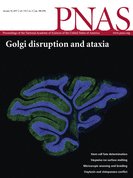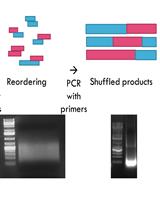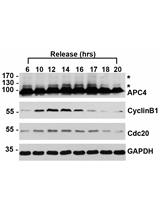- EN - English
- CN - 中文
In vitro AMPylation Assays Using Purified, Recombinant Proteins
使用纯化的重组蛋白进行体外AMP化实验
发布: 2017年07月20日第7卷第14期 DOI: 10.21769/BioProtoc.2416 浏览次数: 8086
评审: Peichuan ZhangAnonymous reviewer(s)
Abstract
Post-translational protein modifications (PTMs) orchestrate the activity of individual proteins and ensure their proper function. While modifications such as phosphorylation or glycosylation are well understood, more unusual modifications, including nitrosylation or AMPylation remain comparatively poorly characterized. Research on protein AMPylation–which refers to the covalent addition of an AMP moiety to the side chains of serine, threonine or tyrosine–has undergone a renaissance (Yarbrough et al., 2009; Engel et al., 2012; Ham et al., 2014; Woolery et al., 2014; Preissler et al., 2015; Sanyal et al., 2015; Truttmann et al., 2016; Truttmann et al., 2017). The identification and characterization of filamentation (fic) domain-containing AMPylases sparked new interest in this PTM (Kinch et al., 2009; Yarbrough et al., 2009). Based on recent in vivo and in vitro studies, we now know that secreted bacterial AMPylases covalently attach AMP to members of the Rho family of GTPases, while metazoan AMPylases modify HSP70 family proteins in the cytoplasm and the endoplasmic reticulum (ER) (Itzen et al., 2011; Hedberg and Itzen, 2015; Truttmann and Ploegh, 2017). AMPylation is thought to trap HSP70 in a primed yet transiently disabled state that cannot participate in protein refolding reactions (Preissler et al., 2015). In vitro AMPylation experiments are key to assess the activity, kinetics and specificity of protein AMPylation catalyzed by pro- and eukaryotic enzymes. These simple assays require recombinant AMPylases, target proteins (Rho GTPases, HSP70s), as well as ATP as a nucleotide source. Here, we describe strategies to qualitatively and quantitatively study protein AMPylation in vitro.
Keywords: AMPylation (AMP化)Background
Metazoan cell signaling is complex and requires tight control. Aberrations in this well-balanced system threaten cellular homeostasis and induce several maintenance systems aimed at restoring the balance (Kim et al., 2013). Protein AMPylation is directly linked to cellular stress: AMPylation of Rho GTPases by bacterial toxins rewires GTPase-dependent signaling, eventually leading to a collapse of the actin cytoskeleton and cell death (Yarbrough et al., 2009; Mattoo et al., 2011). In contrast, AMPylation of Grp78/BiP in the ER keeps this chaperone in a primed, yet silent conformation to be awoken and set in motion once the burden of unfolded protein in the ER surpasses a certain threshold (Preissler et al., 2015; Sanyal et al., 2015). We and others have extensively used in vitro AMPylation assays to study general properties, target selectivity as well as reaction kinetics of Fic domain-containing AMPylases. We used a combination of distinct in vitro AMPylation assays to i) identify novel targets in complex cell lysates, ii) validate suspected targets and iii) approach the role of AMPylase dimerization and auto-modification as prerequisites for enzymatic activity (Truttmann et al., 2015; 2016 and 2017). Our efforts aim at understanding the scope and impact of the AMPylome on cellular signaling. The in vitro AMPylation assays described herein present methods to achieve this goal.
Materials and Reagents
- 1.5 ml tubes (1.5 ml Snaplock Microcentrifuge Tube) (Corning, Axygen®, catalog number: MCT-150-C-S )
- Pipette tips (Thermo Fisher Scientific, Thermo ScientificTM, catalog numbers: 9400327 , 9401255 , 9401410 )
- Microcentrifuge Tube Locks (Sorenson BioScience, catalog number: 11870 )
- Autoradiography film (Carestream Health X-OmatTM LS Film) (Eastman Kodak, catalog number: 05-728-45 )
- Saran wrap (generic)
- Whatman 3MM filter paper (GE Healthcare, catalog number: 3030-6185 )
- Sterile, deionized water (generic)
- Ice in isolated containment (generic)
- Ethanol (Sigma-Aldrich, catalog number: 362808 )
- Purified recombinant AMPylase at 1.0 μg/μl or higher (HIS6-HYPEaa187-437; homemade; see Truttmann et al., 2015)
- Purified recombinant target proteins at 1.0 μg/μl or higher (i.e., HIS6-Histone H3; homemade; see Truttmann et al., 2015)
- Appropriate TRIS-glycine gels (CriterionTM TGXTM Precast Midi Protein Gel) (Bio-Rad Laboratories, catalog number: 5671023 )
- Molecular weight marker (Precision PlusTM Protein Dual Color Standard) (Bio-Rad Laboratories, catalog number: 1610374 )
- 2-amino-2-(hydroxymethyl)-1,3-propanediol (Tris-base) (Sigma-Aldrich, catalog number: 252859 )
- 11.8 M hydrochloric acid (HCl) (Sigma-Aldrich, catalog number: 258148 )
- DL-dithiothreitol (DTT) (Sigma-Aldrich, catalog number: 43815 )
- Magnesium chloride (MgCl2) (Sigma-Aldrich, catalog number: M8266 )
- [Alpha-33P]ATP, 10 mCi/ml; 3,000 Ci/mmol (Hartman Analytic, catalog number: SRF-207 )
Note: It is of uttermost importance to use [Alpha-33P]ATP and not [Gamma-33P]ATP, which is used to study kinase-dependent phosphorylation events. - Sodium chloride (NaCl) (Sigma-Aldrich, catalog number: S3014 )
- Potassium chloride (KCl) (EMD Millipore, catalog number: PX1405 )
- Glycerol (Sigma-Aldrich, catalog number: G5516 )
- Sodium dodecyl sulfate (SDS) (Sigma-Aldrich, catalog number: 74255 )
- 2-mercaptoethanol (Sigma-Aldrich, catalog number: M6250 )
- Bromophenol blue (Sigma-Aldrich, catalog number: B0126 )
- Poly-Phenyl-Oxazole (PPO) (Sigma-Aldrich, catalog number: 216984 )
- Dimethyl sulfoxide (DMSO) Sigma-Aldrich, catalog number: 276855 )
- 1 M Tris-HCl (pH 7.5) (see Recipes)
- 1 M DTT (see Recipes)
- 1 M MgCl2 (see Recipes)
- 100 mM ATP (see Recipes)
- 5 M NaCl (see Recipes)
- Protein storage buffer (see Recipes)
- Reaction buffer (see Recipes)
- SDS-PAGE 6x sample buffer (see Recipes)
- DMSO/PPO solution (see Recipes)
Equipment
- Pipettes (Thermo Fisher Scientific, Thermo ScientificTM, catalog numbers: 4600170 , 4600240 and 4600250 )
- -20 °C freezer (generic)
- 4 °C refrigerator (generic)
- Geiger-counter (generic)
- Refrigerated tabletop centrifuge for 1.5 ml Eppendorf tubes (Eppendorf, model: 5810 R )
- 10 μl Hamilton syringe (Hamilton, catalog number: 80075 )
- Radiation safety gear and personal protection equipment (generic)
- Vacuum gel dryer (Bio-Rad Laboratories, model: Model 583 )
- Glass tray (generic; 5 x 10 inches at least)
- Timer (Alarm Timer) (Grainger, catalog number: 8RLR2 )
- pH meter (Thermo Fisher Scientific, Thermo ScientificTM, model: Orion StarTM A111 )
- Balance (Sartorius, model: Cubis® Precision Balance )
- Vortex (Vortex-Genie 2 Vortexer) (VWR, catalog number: VWR-VG3 )
- SDS-PAGE system (Bio-Rad Laboratories, model: CriterionTM Cell and PowerPacTM Basic Power Supply, catalog number: 1656019 )
- Autoradiography cassettes (FisherBiotech Electrophoresis Systems Autoradiography Cassette, 8 x 10 in) (Fisher Scientific, model: FBAC 810)
Note: This product is not available anymore.
Software
- Fiji/ImageJ image analysis software (https://fiji.sc/)
Procedure
文章信息
版权信息
© 2017 The Authors; exclusive licensee Bio-protocol LLC.
如何引用
Truttmann, M. C. and Ploegh, H. L. (2017). In vitro AMPylation Assays Using Purified, Recombinant Proteins. Bio-protocol 7(14): e2416. DOI: 10.21769/BioProtoc.2416.
分类
生物化学 > 蛋白质 > 修饰
您对这篇实验方法有问题吗?
在此处发布您的问题,我们将邀请本文作者来回答。同时,我们会将您的问题发布到Bio-protocol Exchange,以便寻求社区成员的帮助。
Share
Bluesky
X
Copy link













